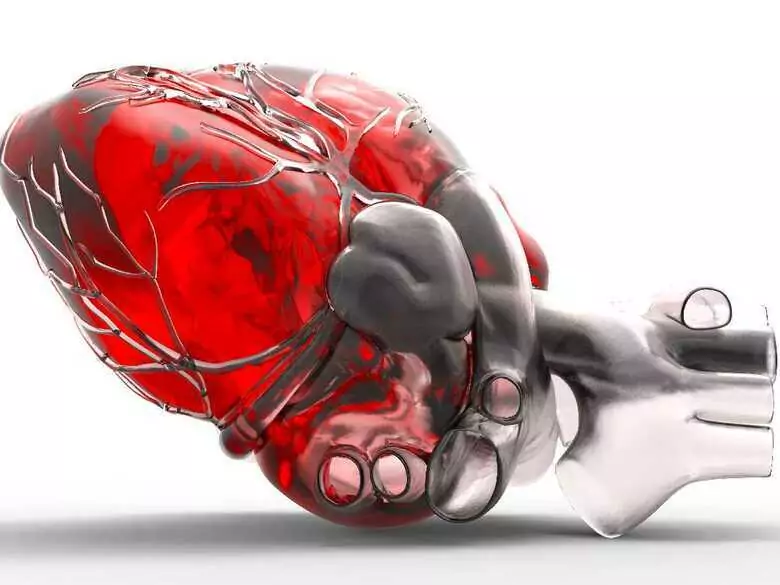Modern medicine covers the treatment of thousands of disease entities. Unfortunately, in some cases, no causal treatment is known or simply not possible due to the specific nature of the disease. Therefore, various forms of prophylaxis are sometimes used in order to reduce the risk of a dangerous disease as much as possible. One of the most common forms of such prophylaxis is so-called anticoagulant treatment, which involves giving patients appropriate medication to prevent the formation of clots and embolisms.
Blood coagulation - what is it?
Blood coagulation is one of our body's most important defence mechanisms. We only need to recall how often we have injured ourselves, not to mention dangerous accidents. The processes that occur when any vessel is damaged are designed to prevent blood loss (and therefore prevent oxygen loss). The essence of this phenomenon lies in the activation of fibrinogen, which forms a clot to stop the outflow of blood. The most important function in this process is played by platelets and so-called plasma clotting factors produced by our liver.
The most common blood clotting disorders
Blood clotting disorders can be divided into two large groups.
- insufficient blood clotting - these are all conditions that disrupt the cascade of chemical reactions that lead to the formation of a clot or the contraction of a bleeding vessel. These often lead to life-threatening haemorrhages and hypovolemic shock (i.e. shock resulting from fluid loss). Diseases such as Von Willebrand's disease, idiopathic thrombocytopenia, haemophilia A or B are most often responsible for the development of this type of disorder.
- hypercoagulability of the blood - this is a group of diseases for the treatment of which anticoagulant therapy is used. The most important disease entity that leads to the development of life-threatening clots is venous thromboembolism.
Venous thromboembolism
Venous thromboembolism consists of two conditions that occur independently of each other: deep vein thrombosis and pulmonary embolism. Deep vein thrombosis refers to the formation of blood clots in the deep venous system, usually in the lower limbs. It is a very common ailment. On average, 2/1000 people are affected! For those over 65 years of age, the figure rises to as many as 1/100 patients! A number of disorders known collectively as "Virchow's triad" are responsible for its formation. These include the slowing down of blood flow in the vessels, the predominance of post-thrombotic factors over factors inhibiting blood clotting, and the formation of minor damage to the vascular wall (for example, through the detachment of an atherosclerotic plaque). Patients with the following risk factors are particularly vulnerable:
- age over 40 years,
- BMI over 30,
- a history of stroke,
- severe trauma (especially multi-organ trauma),
- use of oral hormonal contraception,
- autoimmune diseases,
- pregnancy and puerperium.
Pulmonary embolism, on the other hand, involves the closure or critical narrowing of the pulmonary artery, which is responsible for transporting blood from the heart to the lungs. It is a particularly dangerous disease with a high mortality rate. It is estimated that 7% of all hospital deaths are due to pulmonary embolism.
Forms of anticoagulant treatment
Venous thromboembolism is a disease that is a complication of many other disease entities. In order to avoid it, doctors often decide to include anticoagulant treatment. There are three main forms of it:
- antiplatelet treatment,
- treatment with heparin,
- treatment with vitamin K antagonists.
Antiplatelet treatment
This is a form of therapy aimed at inhibiting excessive platelet aggregation, which can lead to the formation of dangerous clots and embolisms. It is most commonly used with acetylsalicylic acid. It is a drug indicated for conditions such as:
- ischaemic heart disease,
- prevention of myocardial infarction in high-risk patients (patients over 50, smokers, hypertensive, obese, hypercholesterolaemia),
- secondary prevention in patients after myocardial infarction, after vascular stent implantation, after coronary angioplasty,
- prevention of transient ischaemic attacks (TIA) and ischaemic stroke.
In addition to acetylsalicylic acid, other antiplatelet drugs such as clopidogrel, prasugrel or ticagrelor are used.









